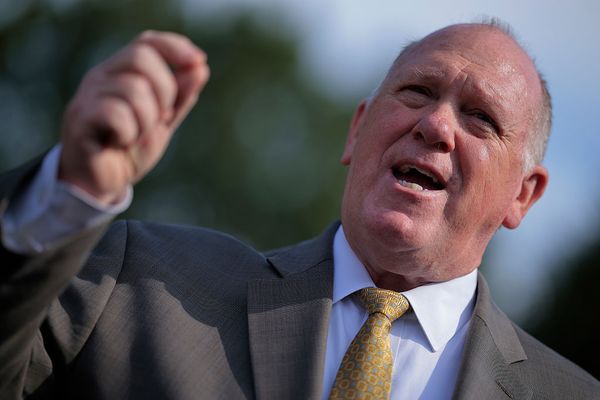Gov. Ron DeSantis and Republican lawmakers swore Florida’s new “anti-riot” law isn’t meant to target Black Lives Matter protesters or quell civil disobedience, even though the governor pitched it in the aftermath of last summer’s demonstrations against police brutality.
A federal judge saw right through their bogus excuse, writing that the law “empowers law enforcement officers to exercise their authority in arbitrary and discriminatory ways.” U.S. District Judge Mark Walker wrote in a ruling this week that the definition of a “riot” is so vague that “Floridians of ordinary intelligence” could not understand exactly what acts are prohibited under the law, a portion of which is temporarily blocked while a lawsuit goes to trial.
The Herald Editorial Board and civil liberties groups have been saying for months that House Bill 1 left far too much of the wording open to law enforcement’s interpretation — so much so that we feared even peaceful protesters could be arrested if others become violent.
We were right. HB 1 is a “’a trap for the innocent,’” Walker wrote, citing case law.
People with common sense didn’t need DeSantis’ Harvard law degree to understand HB 1 had little to do with stopping violence, which, by the way, didn’t happen much in Florida last year anyway. This was a clear dog whistle to Donald Trump and his base, which has become DeSantis’ base now that he’s a potential 2024 presidential contender — all the while swearing that the speculation he’s running is “nonsense,” despite his frequent jetting across the country to fundraise.
We still remember DeSantis using his bully pulpit last year to proclaim he would follow Trump’s calls for “law and order” after protests turned violent in some U.S. cities. Walker also made note of DeSantis’ chest-thumping.
“Governor DeSantis cannot credibly argue that this new definition of ‘riot’ was not intended to empower law enforcement officers against those who may criticize their legal authority, as he has referred to the proposed legislation that led to HB1 as ‘the strongest anti-rioting, pro-law enforcement piece of legislation in the country,’” Walker wrote.
The lawsuit was spearheaded by the group Dream Defenders, and much of the debate during court hearings centered on HB 1’s definition of someone who commits a riot: a person who “willfully participates in a violent public disturbance involving an assembly of three or more persons, acting with a common intent to assist each other in violent and disorderly conduct” that results in injury, property damage or imminent danger to another person or property damage.
It was a discussion that got down to grammar, with Walker ultimately deciding that the state’s interpretation of the law “strains the rules of construction, grammar and logic beyond their breaking points.”
For example, the word “participates” could mean a person who actively joins a “violent public disturbance.” But could it also mean someone who continues to hold up a protest sign or fails to disperse as soon as violence erupts?
Another example: Does “violent public disturbance” mean that the protest turned violent before a person “willfully participated” in it, or does it mean the protest turned violent after they “willfully participated?” Walker wrote.
These distinctions could mean an arrest and a criminal record that could haunt protesters for the rest of their lives. We don’t want law enforcement to make these decisions on the spot. Some officers might choose leniency, as they did when mostly white protesters against the Cuban regime blocked Palmetto Expressway for hours in July.
Other officers might choose Trump’s “law and order” approach. Who’s most likely to be on the receiving end of that? You know the answer.







